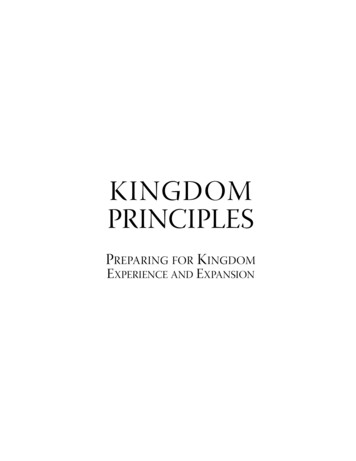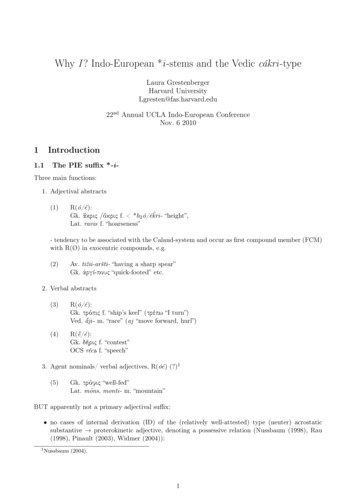
Transcription
Why I ? Indo-European *i-stems and the Vedic cákri-typeLaura GrestenbergerHarvard UniversityLgresten@fas.harvard.edu22nd Annual UCLA Indo-European ConferenceNov. 6 20101Introduction1.1The PIE suffix *-i-Three main functions:1. Adjectival abstracts(1)R(ó/é):“ “height”,Gk. κρισ /îκρισ f. *h2 ó/ékriLat. ravis f. “hoarseness”- tendency to be associated with the Caland-system and occur as first compound member (FCM)with R(Ø) in exocentric compounds, e.g.(2)Av. tižii-aršti- “having a sharp spear”Gk. ργı́-πουσ “quick-footed” etc.2. Verbal abstracts(3)R(ó/é):Gk. τρόπισ f. “ship’s keel” (τρέπω “I turn”)Ved. ā ji- m. “race” (aj “move forward, hurl”)(4)R( ē/é):Gk. δη̃ρισ f. “contest”OCS rěcž f. “speech”3. Agent nominals/ verbal adjectives, R(óé) (?)1(5)Gk. τρόφισ “well-fed”Lat. mōns, monti- m. “mountain”BUT apparently not a primary adjectival suffix: no cases of internal derivation (ID) of the (relatively well-attested) type (neuter) acrostaticsubstantive proterokinetic adjective, denoting a possessive relation (Nussbaum (1998), Rau(1998), Pinault (2003), Widmer (2004)):1Nussbaum (2004).1
(6)a. *krótu/ *krétu- “strength” (Ved. krátu-, Av. xratu-) *krétu-/ *krt-éu- “having strength; “strong” (Gk. κρατύσ)b. *pólh1 u/ *pélh1 u- “amount; plenty” (Gk. πολύ, Goth. filu) *pélh1 u-/ *plh1 -éu- “nu “merous, many” (Ved. purú-) Cognate i-stems in the individual branches never correspond in word-class, e.g.:(7)Gk. ργι ( *h2 er“gi-) “white/whiteness”; swift” : Hitt. harki- “white” - the latter is anadjective, the former (according to the Schindler-school of IE nominal composition) mustgo back to an substantival abstract The few unambiguous cases of i-adjectives are restricted to one particular branch, e.g.:(8)Ved. hári- “yellow”, YAv. zairi-/zāiri- id.; Ved. śúci- “bright” Of these, a subset shows clear traces of reflecting older substantival abstracts that came to beused as adjectives via predicative/adverbial usage(9)1.21.2.1Ved. bhúri- “many”, OAv. būiri- id. (Pinault (1998))Hitt. nakki- “heavy” (Widmer (2005))The Vedic cákri -typeSynchronic features makes agent nouns/ verbal adjectives with iterative-intensive meaning2 corresponds morphologically to the weak stem of the perfect of the respective roots3 mildly productive in the RV (31 formations in total), distributed equally across the ten books,but lost in the Post-Rigvedic period has exact Avestan cognates1.2.2Why is this type interesting ?1. There is an obvious mismatch between the synchronically associated verbal stem from which itseems to have been derived - the perfect stem - with its resultative/perfective semantics andthe semantics of the cákri-type itself, namely durative/iterative/imperfective. This makes theperfect stem as derivational basis of the type suspicious2. As seen, *-i- was not primarily used to form adjectives, and certainly not “marked” adjectivesderived from morphologically characterized tense/aspect-stemsTherefore, an investigation of the type should shed light on The function and prehistory of the PIE suffix *-i- as inherited by Indo-Iranian The history of reduplicated nominal formations in IIr./IE42AiG II,2, 291 ff.Barschel (1986).4On which most recently Oettinger (2010), but see also Rau (1998).32
1.3Synchronic features II: analysis of the syntactic behaviorWhat kind of deverbal formation are we dealing with? The literature so far offers two possibilities :a) essentially agent nouns which through predicative use came to be interpreted as adjectivesb) essentially verbal adjectives or gerund-like formations.1.3.1Evidence from typology: Baker and Vinokurova (2009)Properties of gerunds (so-called “mixed nominalizations”): Can be indefinite (finding the wallet) Can have overt tense/aspect marking (having found the wallet) assign structural case (finding the wallet was not easy) combine with adverbs (having quickly found the wallet)These properties reflect which (functional) projection of the verb a given nominalizing suffix selectsas its complement - distinction between agent, event and “mixed” Voice’VoiceVPV0find-DPthe walletBased on an examination of the syntactic behavior of the cákri- type, I will argue that this is synchronically a gerund/mixed nominalization.1.3.2Core forms1. cákri- “making, causing sth.; maker” (kr “do, make, act”), perf. cakrur. Compounds: ācakrí“making, turning sth. into sth.”, urucákri- “creating unrestrictedness, boundlessness”.(11)RV 6,24,5:anyádadyá kárvaram anyáduśvó’sacdifferent-A.SG. today deed-A.SG. different-A.SG. PART tomorrow not.being-A.SG.ca sánmúhur ācakríríndrah and being-A.SG. at once turning.into-N.SG. Indra-N.SG.“A different deed today and a different one tomorrow, (thus) Indra makes the unreal atonce real.”(12)RV 2,26,4d:3
amhóścid asmā urucákrirádbhutah narrowness-A.SG. even him-D. making.broad-N.SG. wonderful-N.SG.“The wonderful one, creating unrestrictedness for him even in distress”.A close parallel is found in Old Avestan, where caxri- occurs once:(13)Y.34.7:yōi vaŋh @ušvaēd@nāmanaŋhōs @nghūš who good-G.Sg. knowing-N.SG. thought-G.SG. proclamations-A.PL.raēx@nåasp @ncı̄tsādrācı̄tcaxraiiōuš@urū inheritances-A.PL. -N.PL. ?Bartholomae (AIW, 576): “die die . Erbanteile durch ihre Lehren in Leid und Qual verkehren ? - ”.Insler (1975, 223): asp @n and sādrā are modifying s @nghūš and raēx@nå, respectively: “ . who,through their possession of good thinking, make even immoral decrees and painful legacies disappear”Humbach (1991, 141): “.who, knowing the bequests and legacies of good thought, turn any misfortune and distress into pleasure?”, where asp @n and sādrā are turned into uš@urū (“pleasure” ?).Skjaervø (p.c.): No double accusative structure, one accusative object, uš@urū I.sg.2. jágmi- “going quickly” (gam “go, move, come”), perf. jagmur. Optional accusative theme (“Richtungsakkusativ ” or accusative of goal):(14)RV 2,23,11a:anānudóvrsabhójágmirāhavám relentless-N.SG. bull-N.SG.approaching-N.SG. battle-A.SG.“a relentless bull, approaching the fight .5 ”.Avestan: *jaγmi- is presupposed by the YAv. superlative vı̄jaγmišta- “ ‘spreading out most”:(15)Yt.1,4:. tatvı̄spahe aŋh @ušastuuatōmana this-N.Sg.all-G.SG. existence-G.SG. having.bones-G.SG. thoughts-A.PL.astivı̄jaγmišt@mbe-3.SG.PRES. spreading.out.most-N.SG.“.this is what out of the whole material world spreads out most to the thoughts.”3. jághni- “beating, slaying” (han “beat, slay, kill”), perf. jaghnur. Compounds: N.sg. nijaghnís“beating sbdy. to the ground”.5“Ein unnachgiebiger Bulle, gern in den Streit ziehend,” (Geldner 1951, I, 304).4
(16)RV 9,61,20:jághnirvrtrámamitríyaṁ slaying-N.SG. resistance-A.SG.hostile-A.SG.“(as) one who overcomes hostile resistance”Avestan: superlative jaγništa- “who slays most” (Yt.11.3, Yt.12,8 and ̄tō.t@mōhō a-N.SG. sustaining.order-N.Sg. Sraošpoor-A.Sg. most.protecting-N.SG. who v@r@θrajādruj@m jaγništōobstacle.smashing-N.SG. lie-A.SG. most.slaying-N.SG.“It is Sraoša, sustainer of Order, who best protects the poor one, who, overcoming ob down the Lie.”stacles, beats(18)RV 9,53,2: ayā nijaghnírójasārathasamgédháne DEM-I.SG. beating.down-N.SG. strength-I.sg. vā ábibhyusā hrdā brave-I.SG. heart-I.SG.praise-SBJV.1.SG.“With this [song] I shall praise with a brave heart, striking with strength in the chariotrace when the prize has been set.”4. jághri- “sprinkling, splashing” (ghar ”sprinkle”), no perfect stem attested in the RV, possiblecomparandum YAv. jaγri- in the Hapax Sp@n.jaγrı̄m (name of a demon) in V.19,40.5. táturi- “conquering, victorious” (tr̄ “conquer, cross (over), overcome”). No formal correspondence to the attested perfect tatāra/ titirus. tuji- “attacking” (tuj “hurl, push forward, set in motion”). Perf. opt. 3.sg. tutujyā t, part. perf.6. tū tujāna-. Compounds: A.sg. átūtujim “slow, lagging behind”.mid. tū7. dadí- “giving” (dā “give, donate”), perf. dadur, but also redupl. present stem (3.pl. dádati).Compounds: ādadí- “taking (away), receiving”, parādadí- “delivering, surrendering sth./sbdy.”,etc.Adverbial modification, e.g. (19):(19)RV 2,24,13:vı̄ludvésāánuváśarnámādadíh hating.enemies-N.SG. along-PREP wish-A.PL. debt-A.SG. acquiring-N.SG.sáhavāj ı̄samithébráhmanas pátih REL-N.SG. EMPH winner-N.SG. battle-L.SG. B.P. “Hating the enemy, collecting what he is owed as he wishes, Brahmanaspati is the victorin battle.” 66“In der Feindschaft zäh, nach Wunsch die Schuld einziehend, ist Brahmanaspati im Kampfe Sieger.”5
8. dádhi- “placing, creating” (dhā “place, put/set down”), perf. dadhur, redupl. pres. 3.sg. dadhā ti.9. papí- “drinking” (pā “drink”), Perf. papur, cf. (19) for use with accusative objects.10. pápuri- “procuring” (pr̄ “provide, procure”). Perf. st. pupūr -. See the “Kuiper form” pápri- (see laryngeal effect.below 2. pápri-) without11. 2. pápri- “procuring” (pr̄ “provide, procure”), see 10. above. 12. babhrí- “carrying, bearing” (bhr “carry, bear, bring”). Perf. stem babhr-/ jabhr-7 , part. perf. med. babhrāná-. 13. vavrí- m “hiding place” (vr “surround, restrain, lock in”). Perf. 3.pl. vavrus. Compounds: vívavri- “hiding place, cover”. Lexicalized in the meaning “shell” or “hiding place” ( *“that which(habitually) covers”, Tichy (1995)), possibly to be compared to Av. vaoiri- “skin, covering” (G.pl.ha m.vaoirina m “with skin” (said of milk)).14. sásni- “winning repeatedly” (san “win, gain”). Perf. 3.sg. sasā na, perf. part. sasaváms. 15. sásri- “running” (sr “run”). Perf. 3.pl. sasrús, part. perf. act. sasrváms-, part. perf. mid. sasrāná-. 16. sāsahí- “victorious” (sah “defeat, overcome”), perf. 3.sg. sāsā ha/ sasāhe, opt. sāsahyāt, mid. part.sāsahāná-/ sehāná-. Compounds: visāsahí- “victorious, overcoming (competitors)”. 17. súsvi- “(the one who is) pressing Soma” (su “press”). Pres. 3.pl. susvati, perf. 3.sg. susā va, part. act. susuváms-, mid. susvāná-. Compounds: ásusvi- “not pressingperf.Soma”. 1.4Peripheral forms1. ānaśí- “reaching” (naś), in N.sg. vyānaśís “reaching, penetrating”, perf. 3.sg. nanāśa, EWA II,27f.2. cācali- “moving, staggering”, in N.sg. ávicācalis “not staggering” (RV 10,173,1; 10,173,2), madeto the root cal, a variety of car “move”.3. jáguri- “tiresome, exhausting” may or may not be drived from the root *gr̄ “be/make heavy, tired” (ved. grā van- “stone”), but may also belong to glā yati “is exhausted” (Werba(1997, 403)),KEWA, III, 699).4. jajñi- “knowing” (jñā “know”, perf. 3.pl. jajñur ) or “procreating continuously” (jan- “beget”,perf. 3.pl. jajñur ), cp. Oldenberg (1912, 274), EWA I, 599ff., Tichy (1995, 280). Only oneRigvedic attestation, N.pl. áprajajñayas (10,71,9).5. t ātrpi- “nourishing” (trp “nourish oneself, become satiated/satisfied”). Part. perf. mid. tātrpāná-. 6. d ādhrsi- “bold, courageous” (dhrs “be bold, advance, attack”). Perf. 3.sg. dadharsa, perf. part. sváms-.act. dadhr 7. 1. pápri- “helping (across), saving” (pr̄ “cross over, assist, preserve”). Redupl. 3.pl. píprati, Caus.Aor. apı̄paran, but no perfect or intensivestem attested in the RV.8. śiśvi- “growing” (śū “swell, grow (strong)”), in súśiśvi- “growing well” (A.sg.: 1,65,4). Perf. 3.pl. śuvāna-.śūśuvus, Perf. part. act. śūśuváms-, mid. śū 9. yayí- “hurrying”, as a substantive: “storm” (yā “drive, move”). Perf. 3.pl. yayús.10. yúyudhi- “pugnacious, eager to fight” (yudh “fight”). Perf. 3.pl. yuyudhus.7A suppletive stem probably derived under the influence of the semantically closely related root hr “bring, hold”, cf. Mayrhofer, EWA II, 248, Hoffmann, AzI II, 45.6
yudhi- “pugnacious” (yudh “fight”). This is clearly a variety of the better attested yúyudhi-,11. yūwhich would not have fitted into the break after an early caesura as well as the long reduplicatedsyllable does (RV 10,149,4). yuvi- “keeping away, restraining sth./sbdy.” (yu “keep away, hold off, restrain sth./sbdy.”).12. yūNo perfect, but pres. (yuyoti).13. v āvahi- “moving quickly” (vah “go, drive/draw a waggon, lead”), Perf. 3.pl. ūhús.14. vívici- “distinguishing” (vic “separate, sieve, shake”). Pres. 2.sg. viveksi, Part. Perf. vivikváms-. 1.4.1Summary(20)Table: case assignment (simplex & compound forms, core and peripheral forms)dadísāsahí(vavrí 9 (súsvi cákrisásni jágmi -10táturi tuji tūyayípápuri 2. pápri jághni babhríyúyudhi jághri (tūtujípapísásri Total2Ø617111184555311121A.9A. & A.D.1A. & D.3L.2811622G.111adv.39 (?)121adj.21111211111111181241347116 (15 ?)9Total191913)11)101075554322211)11121Explaining the cákri -type I: synchrony2.1The derivational basis: Perfect, intensive or reduplicated presentThree possible verbal stems present themselves a priori as candidates for the derivational basis of thecákri-type:1. The perfect stem: because of the formal equivalence2. The intensive stem: because of the semantic equivalence3. The (-a-)redplicated present stem: mainly because of the formal equivalence, but also becauseof the non-perfective (though not necessarily iterative or intensive) semantics8In 2,23,3d mŕdhas could also be A.pl. in 10,99,5b vívavrı̄.Adjectival only10Without 10,106,8d, which is unclear.97
2.1.1PerfectUnlikely candidate because of the diverging semantics of this stem vis-à-vis those of the reduplicatedi-stems.Furthermore, different semantics of verbal adjectives which are unequivocally derived from thesynchronic perfect stem (-u-, -vi-participles)11 :(22)jā grvi- “wary, alert” (jr̄ “wake up”), perf. jagā ra “has woken up” - YAv. jaγāuru jijyú- “victorious” - jigā ya “has conquered”2.1.2Intensive(21)Schaefer (1994): four formally different types of intensive formations.Type I: (accented) long-vowel reduplication (e.g. pā paje “stops, stands still repeatedly”), closelyresembles certain long-vowel reduplicated perfects (except for the accentuation), which must occsionallyhave led to a confusion of the two formations, e.g.(23)dhar “hold, support”, pf. dādhā ra “has held” (RV ), int. st. dárdhar - vs. later dādharti (JB)and dādhrati (TS), (Schaefer: int. presents backformed from the perfect stem)(24)ghr “wake up”, pf. jagā ra “is awake” (RV ), but also ptcp. jā grat- (Schaefer: partciple of the intensive-presentstem later seen in AV jāgrati and MS jāgárti)The long-vowel reduplication can in both cases be explained as due to compensatory lenghteningfollowing the loss of a PIE laryngeal:PIE perf. *h1 ge-h1 gór-e PIIr. H ̌aHgā ra Ved. jāgā raPIE int. *péh2 -pV“g-ei12 PIIr. páHpa ́ai Vedic pā paje““Assumption: The cákri-type was derived from the weak stem of the intensive. Because of a formaloverlap between type I intensives and long-vowel reduplicated perfects, the derivational base wasreinterpreted as belonging to the perfect stem, new i-formations were derived analogically from shortvowel reduplicated perfects:(25)(26) tujitūtuj - : tūsāsah-: sāsahícakr - : X, X cákri- etc.Counterarguments: The long-vowel redupliacated i-adjectives are, apart from sāsahí-, rather marginal in the RV andhardly ever assign case Almost all the core forms and certainly all RV forms which have good Avestan cognates haveshort-vowel reduplication The long vowel in the initial syllable of these forms is probably secondary on metrical grounds; 26out of 36 attestations occur in verse cadences, we may suspect metrical lenghtening (thus alreadyArnold (1905)), especially in cases where we find both long- and short-vowel reduplication in the yudhi-/yúyudhi-)associated perfect stem as well (e.g. tutuj -/tūtuj - and the case of yū Wouldn’t we expect to see i-adjectives from intensive stems with full reduplication?Conclusion: a priori an attractive solution, but poses too many problems on closer inspection1112Cf. Rau (1998).The root is *peh2 “g according to LIV2 , but cf. Ved. pajrá- “solid”.8
2.1.3Reduplicated presentSynchronically, four of the reduplicated i-adjectives are associated with a reduplicated present stem: dadí- “giving” : pres.3.sg. dadāti, pl. dad-(27) dadhí- “placing” : pres.3.sg. dadhāti, 3.pl. dadhati 1. pápri- “helping across” : pres.3.sg. píparti, 3.pl. píprati. The accent on the reduplicationsyllable and the preserved e-grade in the corresponding cákri-formation are indicationsthat this present once had PIE *e/PIIr. *a-reduplication. vívici- “distinguishing” : pres.3.sg. viveksi, weak stem vivic- ? súsvi- : pres. 3.pl. susvati, although this is an inner-Vedic innovation (LIV2 , 537f.) Counterargument: This class is too small to be the starting point, and none of the i-stems associatedwith it are also attested in Avestan.2.1.4Reduplicated present IIAn alternative: the cákri-type originated in a PIE reduplicated present/intensive formation ratherthan an IIr. one. Two recent proposals fit this: Jasanoff (2003): a subset of what became the classical PIE perfect started out as reduplicatedpresent formation to “*h2 e-conjugation” aorists of the type 1.sg. C1 e-C1 óRC2 -h2 e, 3.pl. C1 eC1 RC2 - ēr(s) Oettinger (2006): posits a “proto-intensive” formally identical to Jasanoff’s reduplicated *h2 econjugation class from which the IE reduplicated present (*-mi, *-si, *-ti . set of endings), theIIr. intensive (full reduplication) and the IE perfect developped. This would make the cákri-type an archaism2.2A synchronic template: unreduplicated verbal adjectives in -i-Mostly deverbal adjectival i-stems attested as second compound members of (synchronically) verbalgoverning compounds:2.2.1FCM substantive(28)a. gŕbhi-b. dari-c. bhári-“seizing, grasping” (grbh), compounds: durgŕbhi- “difficult to reach, seize”, pádgrbhi “grabbingthe feet” (name of a demon, cf. EWA II, 68f.).“splitting, breaking” (dr̄), godari- “splitting out cattle”. “carrying, bearing” (bhr), in sahobhári- “bringing strength”. 2.2.2FCM preverb or adverb(29)a.“extending, stretching” (jri), urujrí- “extending, stretching widely”, párijri- a “stretching out in all directions”.b. tují-“hurling” (tuj ), ātují- “hitting, striking”.c. yají-“offering, sacrificing” (yaj ), in āyají- “bringing, procuring”. jri-9
2.2.3Simplex deverbal i -adjectives(30)a.añjí- “anointing”, but more often “ointment” (añj ), compounds: vrsadañjí- “raining ointment”, svédañji-, “having sweat as ointment, oiled with sweat”. b.saní- m “winning, procurement, gain” (san), compounds: ūrjasani- “bestowing power”,gosáni- “winning, procuring cows”, pitusáni- “granting, giving food”, etc. c.svarí- “sounding, roaring” (svar ).d.śúci- “bright, gleaming” (śuc).This type may well have provided the synchronic template for using the suffix -i- to derive adjectivesfrom other characterized stems as well - NB the combination with preverbs, as with the cákri-type!3Explaining the cákri -type II: The diachronic perspectiveAs seen above, PIE *-i- was apparently used to derive of masculine endocentrics/agent nouns. Hereare some examples given by Nussbaum (2004):(31)a.Av. tiγra- “sharp” : tiγri- m. “arrow”b.PIE *mntó- “projecting” (Lat. mentum “chin) : *monti- “that which projects (Lat. mōns “mountain”)c.““ “that which is high/ pointed” (Lat. ocris)PIE *h2 ekró“high, pointed” : *h2 ó/ékri-Nussbaum: This type tends have a development similar to what gave the Germanic “weak adjectives” Probably the origin of the Latin tenuis, grauis etc. type and presumably also formations likeVed. jívri- “lively” 13This function seems to have originated in the adjectival *-o-stem : substantival *i-stem phenomenonassociated with the stative/property-concept roots of the Caland system.From this starting point, the suffix could easily have developped into a deverbal suffix deriving agent nominalizations from any verbal root (i.e. not restricted tothe Caland-system any more) adjectival/predicative usage as in the Germanic weak adjektives or the Vedic dā tar -type, whichmakes agent nominals denoting a habitual agent, are mostly used predicatively and can assignstructural case14 , e.g. (32)(32)RV 6,23,4:gántéyāntisávanāháribhyām babhrírvájramvisitor-N.SG.-so.many-A.PL. sacrifices-A.PL. yellow-I.DU. carrying-N.SG. cudgel-A.SG.papíhsómamdadírgā hkártāvı̄ram drinking-N.SG. Soma-A.SG. giving-N.SG. cows-A.PL. maker-N.SG. tá manly-A.SG.leading.all.heroes-A.SG.listener-N.SG. call-A.sg.praising-G.SG.stómavāhāh receiving.praise-N.SG.1314Cf. Pinault (1987-1988).Tichy (1995, 50ff.).10
“The one who visits so many Soma sacrifices with his pair of duns, carrying the cudgel, drinkingSoma, giving cows, making the manly hero the leader of all heroes, listening to the call of thepraising one as one who receives praise.”Here, the reduplicated i-adjectives and the tar -formations behave identically with respect to syntax/meaning.4Conclusion PIE *-i- was inherited by Proto-IIr. as an agent nominalizer which was already on its way tobecoming a participle/“mixed nominalization”. Once a sufficient number of agent nominals of the structure R-i existed, the reinterpretation ofthis derivation as being a deverbal rather than a denominal one meant that such a nominal couldbe formed to every root without necessarily needing a thematic adjective as an intermediate stepin the derivation. Extending the use of this suffix to characterized tense/aspect stems was probably facilitated bya parallel devlopment seen in the suffix *-u, cp. Ved. jígı̄sa- (desiderative st. of jay “prevail, conquer”) : jigı̄sú- a “wishing to prevail” The derivational basis of the cákri-type was NOT the perfect, but most likely a (iterative-intensive?) present formation as envisaged by Jasanoff and/or Oettinger. Within IIr., the formation developped into gerund-like nominalization with “mixed” features,which explains its syntactic behavior.ReferencesArnold, E. Vernon. 1905. Vedic metre in its historical development. Cambridge: Cambridge University Press.Baker, Mark C., and Nadya Vinokurova. 2009. On agent nominalizations and why they are not like eventnominalizations. Language 85/3:517–556.Barschel, Bernd. 1986. Zur Vorgeschichte der altindischen reduplizierten Verbaladjektive auf -i. In Sanskritand World Culture. Proceedings of the Fourth World Sanskrit Conference of the International Associationof Sanskrit Studies, ed. W. Morgenroth, Schriften zur Geschichte und Kultur des alten Orients 18, 305–310.Berlin.Bartholomae, Christian. 1904. Altiranisches Wörterbuch. Strassburg: Karl J. Trübner.Debrunner, Albert. 1954. Altindische Grammatik , volume II,2: Die Nominalsuffixe. Göttingen: Vandenhoeck& Ruprecht.Geldner, Karl F. 1951. Der Rig-Veda aus dem Sanskrit ins Deutsche übersetzt, volume I-III. Cambridge, Mass.[Harvard Oriental Series 33-35].Hoffmann, Karl. 1976. Aufsätze zur Indoiranistik , volume II, ed. J. Narten. Wiesbaden: Reichert.Humbach, Helmut. 1991. The Gāthās of Zarathushtra, volume I & II. Heidelberg: Universitätsverlag Winter.Insler, Stanley. 1975. The Gāthās of Zarathustra. Number 8 in Acta Iranica. Tehran-Liège: BibliothèquePahlavi/ Leiden: E.J. Brill.Jasanoff, Jay H. 2003. Hittite and the Indo-European verb. Oxford University Press.Mayrhofer, Manfred. 1976. Kurzgefasstes etymologisches Wörterbuch des Altindischen, volume III. Heidelberg:Universitätsverlag Winter.Mayrhofer, Manfred. 1992. Etymologisches Wörterbuch des Altindoarischen, volume I. Heidelberg: Universitätsverlag Winter.11
Mayrhofer, Manfred. 1996. Etymologisches Wörterbuch des Altindoarischen, volume II. Heidelberg: Universitätsverlag Winter.Nussbaum, Alan J. 1998. Two Studies in Greek and Homeric Linguistics. Göttingen: Vandenhoeck & Ruprecht.Nussbaum, Alan J. 2004. Cool *-ēd -: The Latin frı̄gēdō and Greek λγηεδών, τηκεδών, and ûı̄γεδανόσ Types.Paper presented at the “23rd East Coast Indo-European Conference” (Virginia Polytechnic Institute) .Oettinger, Norbert. 2006. Review of Jasanoff, Jay H., Hittite and the Indo-European verb. Kratylos 51:34–45.Oettinger, Norbert. 2010. Das Verhältnis von nominaler und verbaler Reduplikation im Indogermanischen undAnatolischen. Arbeitstagung on the Indo-European Verb, UCLA, 13-15 Sept. 2010 .Oldenberg, Hermann. 1912. Rgveda. Textkritische und exegetische Noten, siebentes bis zehntes Buch. Berlin. Pinault, Georges-Jean. 1987-1988. Védique jírvi -/jívri -. Indologica Taurinensia 14:313–338. ri -, un ancien substantif. Bulletin des Études Indiennes 16:89–121.Pinault, Georges-Jean. 1998. Védique bhūPinault, Georges-Jean. 2003. Sur les thèmes indo-européens en *-u-: dérivation et étymologie. In Indogermanisches Nomen. Derivation, Flexion und Ablaut, ed. E. Tichy/ D. Wodtko/ B. Irslinger, 153–188. Bremen:Hempen.Rau, Jeremy. 1998. PIE *uóidu-/ *uéidu- and its Derivatives. Die Sprache 40/2:133–160.“ “““Rix, Helmut. 2001. Lexikon der Indogermanischen Verben. Bearbeitet von Martin Kümmel, Thomas Zehnder,Reiner Lipp und Brigitte Schirmer . Wiesbaden: Reichert, 2 edition.Schaefer, Christiane. 1994. Das Intensivum im Vedischen. Historische Sprachforschung: Ergänzungsheft 37.Göttingen: Vandenhoeck & Ruprecht.Tichy, Eva. 1995. Die Nomina Agentis auf -tar- im Vedischen. Heidelberg: Universitätsverlag Winter.Werba, Chlodwig H. 1997. Verba IndoArica. Die primären und sekundären Wurzeln der Sanskrit-Sprache. ParsI: Radices Primariae. Wien: Verlag der Österreichischen Akademie der Wissenschaften.Widmer, Paul. 2004. Das Korn des weiten Feldes. Innsbruck: Institut für Sprachwissenschaft der UniversitätInnsbruck [IBS 111].Widmer, Paul. 2005. Der altindische vrk ı̄-Typus und hethitisch nakk ı̄-: Der indogermanische Instrumentalzwischen Syntax und Morphologie. Die Sprache 45:190–208.12
Why I? Indo-European *i-stems and the Vedic cákri-type Laura Grestenberger Harvard University Lgresten@fas.harvard.edu 22nd Ann


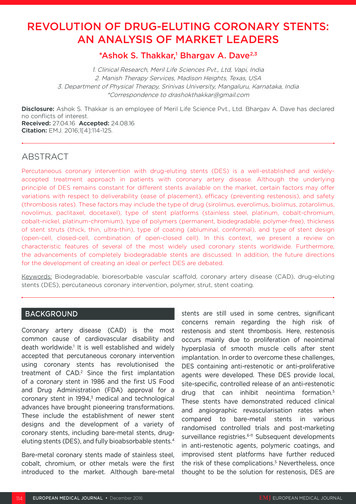
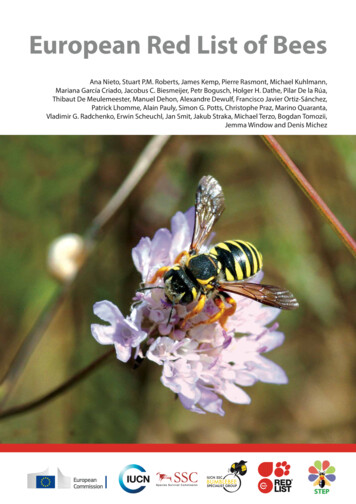
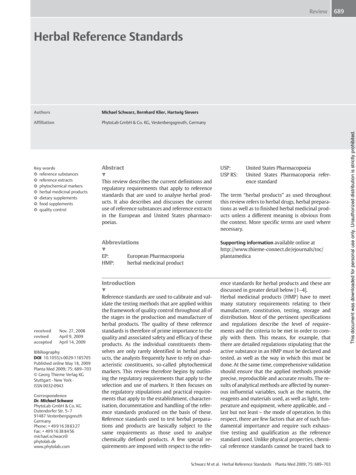
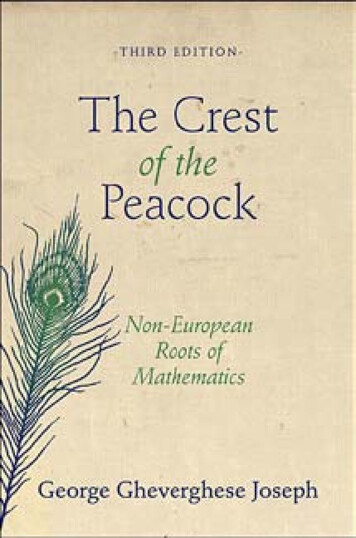

![[Page 1 – front cover] [Show cover CLEAN GET- AWAY 978-1 .](/img/13/9781984892973-6648.jpg)

